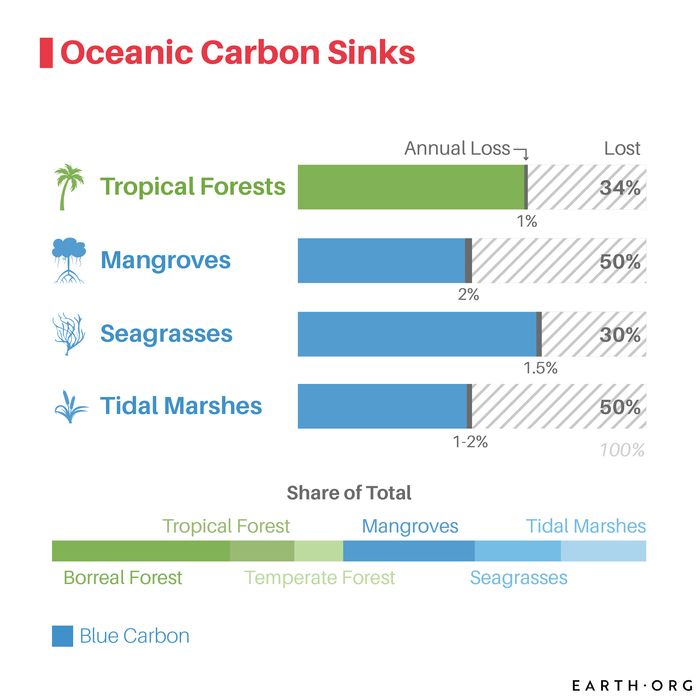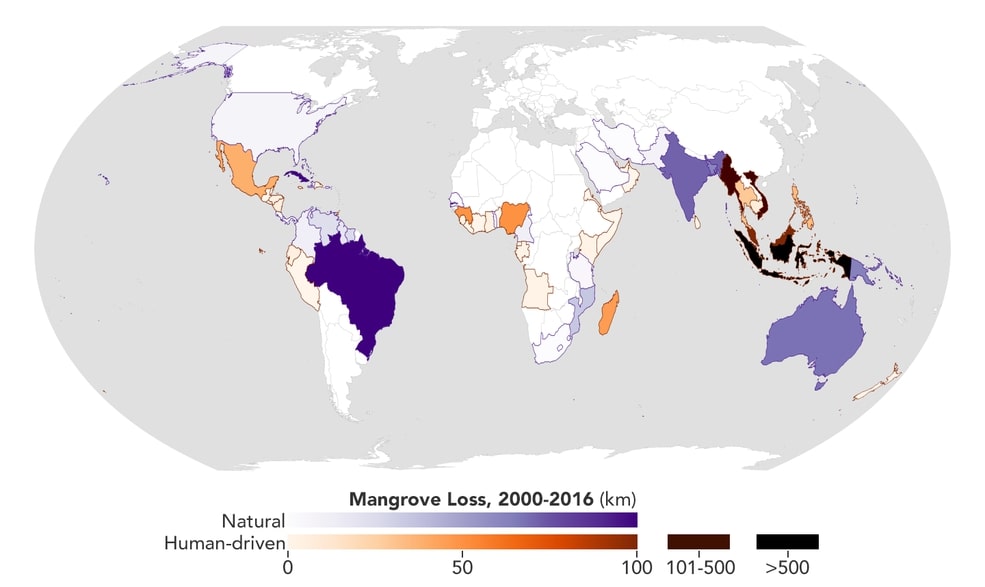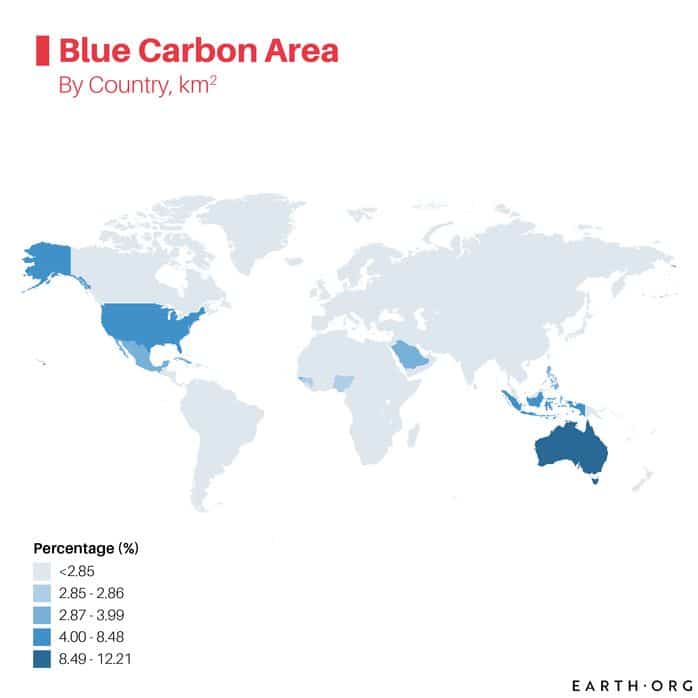On a local level, coastal ecosystems provide healthy fisheries, cleaner oceans and erosion-resistant shorelines. On a global scale, their services consist of sequestering carbon at incredibly high rates, forming stores that we refer to as Blue Carbon.
—
The main sinks are mangroves, tidal (or salt) marshes and seagrass meadows, found on every continent except Antarctica and covering only 2% of all oceanic area. Despite their scarcity, they are crucial components of the biosphere, and unfortunately, they are disappearing fast.

As you may suspect, human activities like fish farming are the main driver behind these losses.
A mangrove-focused 2020 NASA study reported that 62% of the damage is anthropogenic while the rest comes from natural causes. Of course, natural damage driven and exacerbated by climate change can be indirectly linked to humans.
While pressure has been declining overall, human causes more so than natural ones, increasing the latter’s importance in future conservation efforts.

Source: NASA.
Similarly, seagrass declines can be attributed to human activities like coastal development, and declining water quality, while tidal marshes find themselves drained and dry due to our tidal restrictions.
We often build dikes, tidal gates and impoundments around waterways near settlements, which stops water influxes towards surrounding reservoirs like these marshes. The result is the loss of natural drains during floods and biodiversity loss.
Valuing Nature
The range of services that coastal ecosystems provide undoubtedly have economic value to us, though it can be difficult to measure them holistically.
However, if we focus on carbon sequestration, there are tools at our disposal to put a price on Blue Carbon absorption around the world.
The social cost of a ton of carbon, or how much each ton of carbon will end up costing our economy, was tagged at US$37 dollars by the UN. A team of researchers from the Kiel Institute for the World Economy used this to estimate the value of coastal ecosystems’ yearly carbon storage.
According to their results, the answer is between US$160 and US$220 billion a year.
We mentioned that blue carbon is found all around the world, but some countries hold far more than others.

Much like the world’s rainforests, or remaining untouched wilderness, stewardship of these invaluable resources falls onto few. We’ve seen what can happen when the wrong person is elected to office with Jair Bolsonaro, under whom Amazon deforestation rose again after a decade of progress.
Putting a concrete price tag on Blue Carbon is huge for conservation – its proponents will now be able to make concrete cost-benefit analyses to push for protective measures. This may not always lead to enough votes within the government, but it does provide hard evidence in court.
There are other examples of conservation litigation around the world, like those against wildlife destruction in Indonesia and the Democratic Republic of the Congo, but these suffer from a lack of robust science and figures.
Blue Carbon pricing is an example of how research is helping build a giant case against environmental destruction. Whether or not this will happen fast enough to avoid catastrophe remains to be seen.
This article was written by Owen Mulhern. Cover photo by Benjamin L. Jones on Unsplash.
You might also like: 11 Interesting Facts About Climate Change










![The Statistics of Biodiversity Loss [2020 WWF Report]](https://u4d2z7k9.rocketcdn.me/wp-content/uploads/2020/12/lprwinkyTHB-544x306.jpg)





